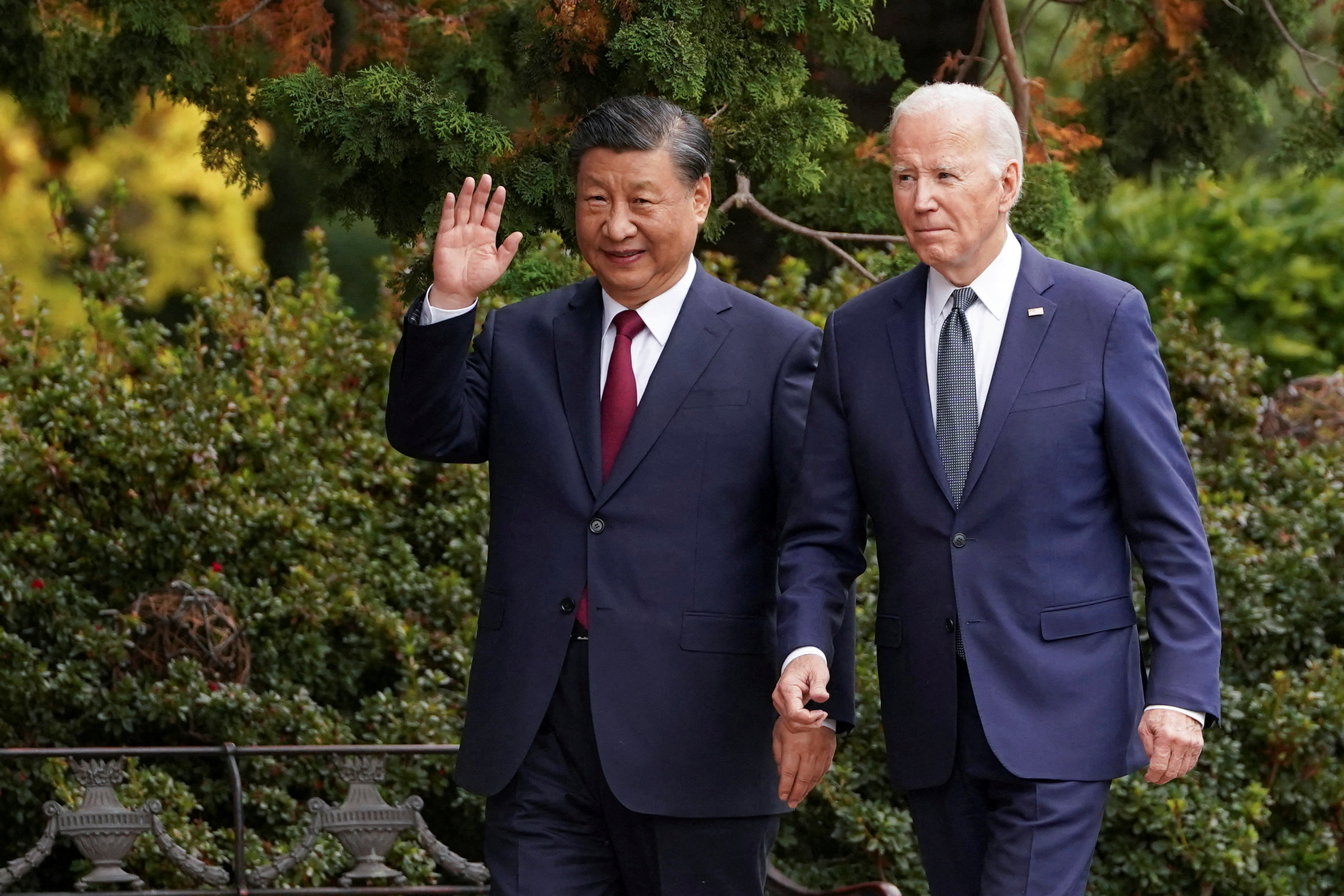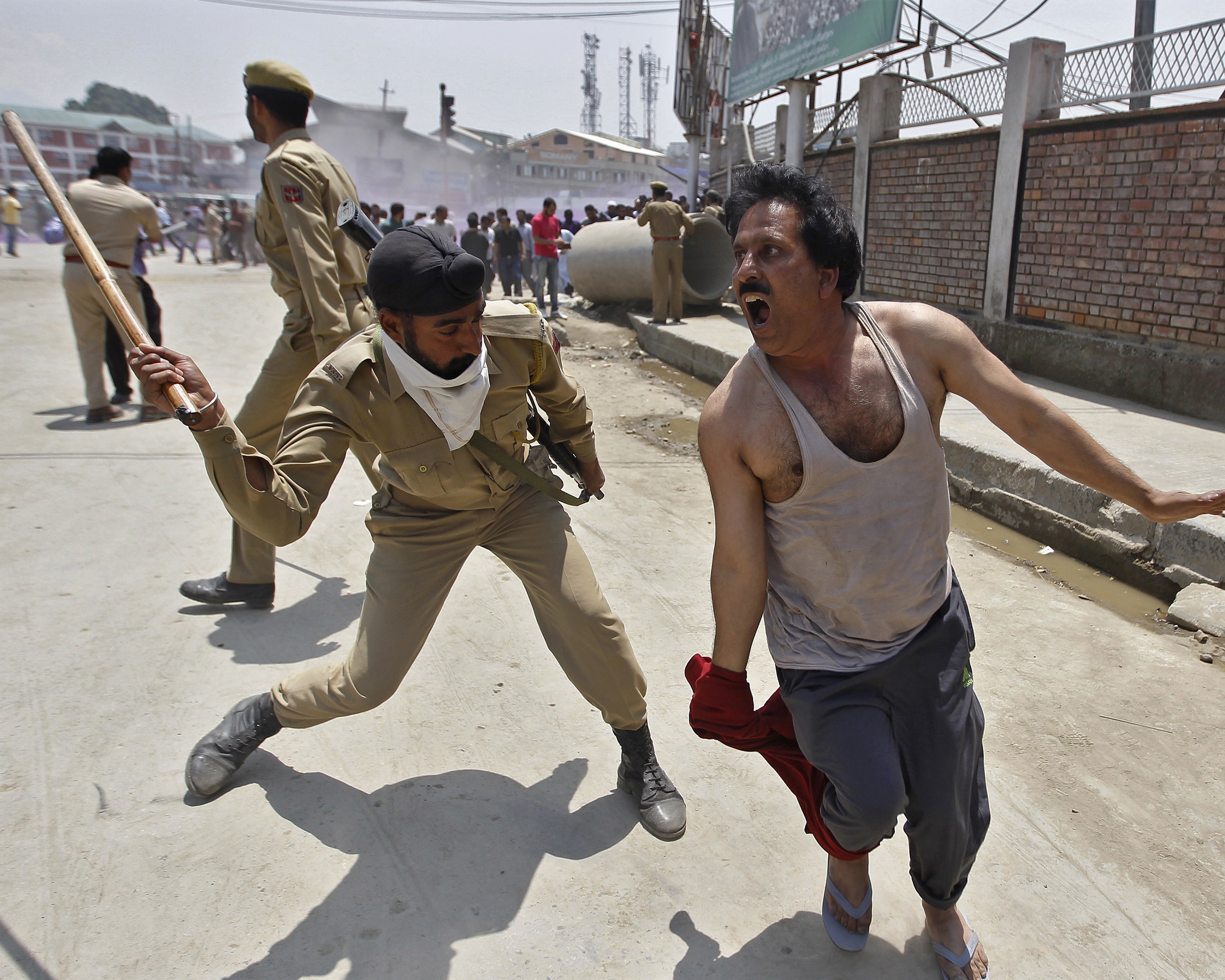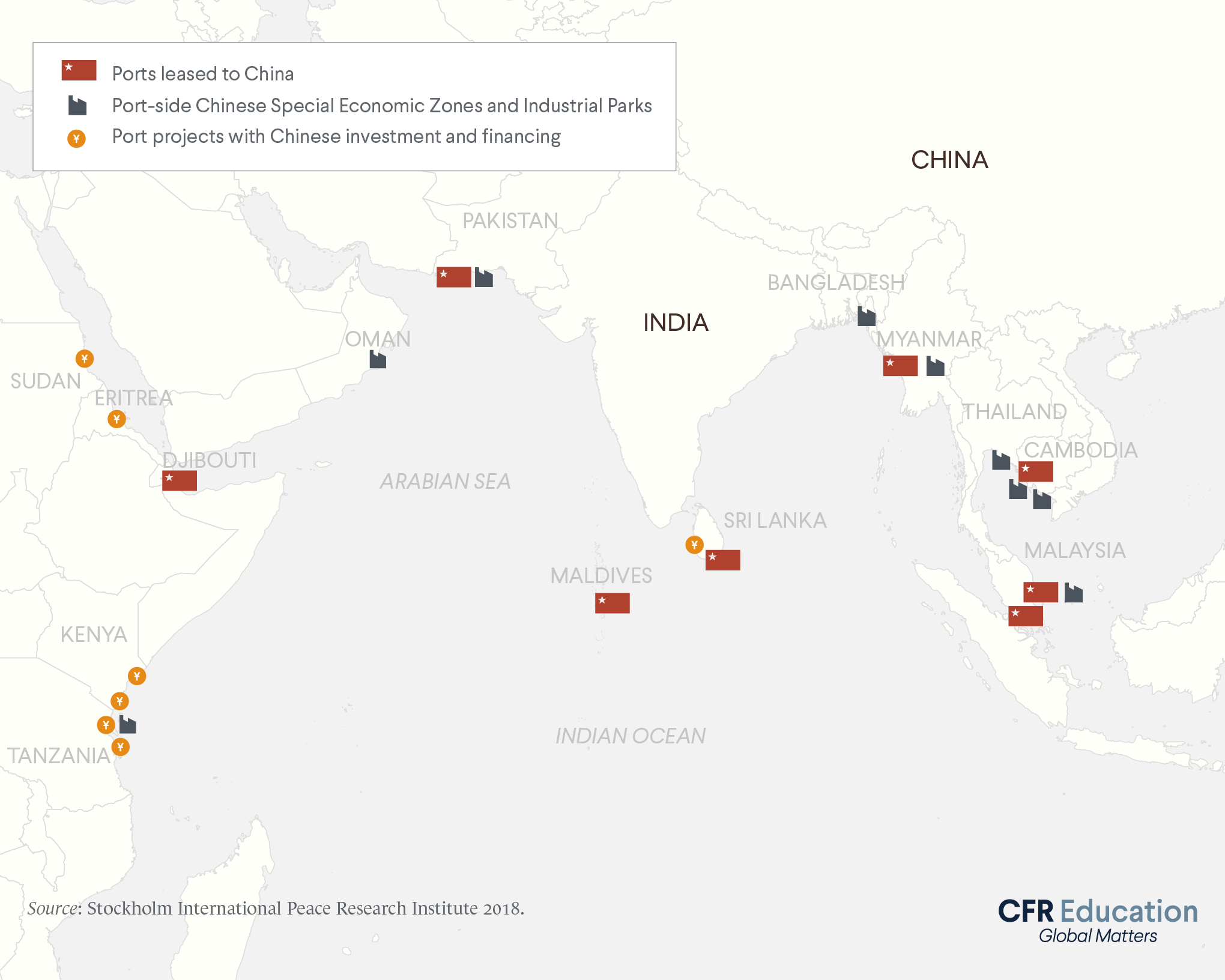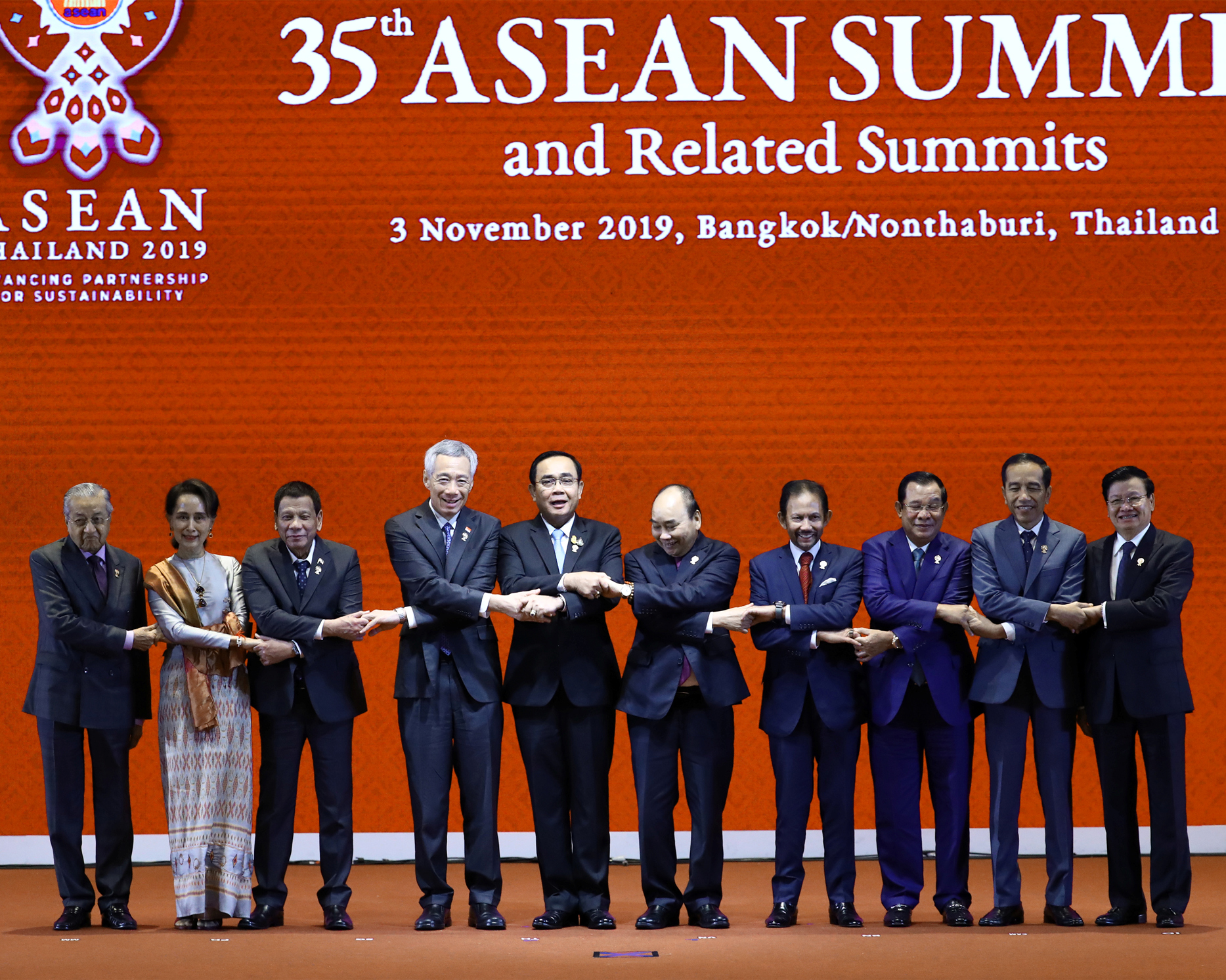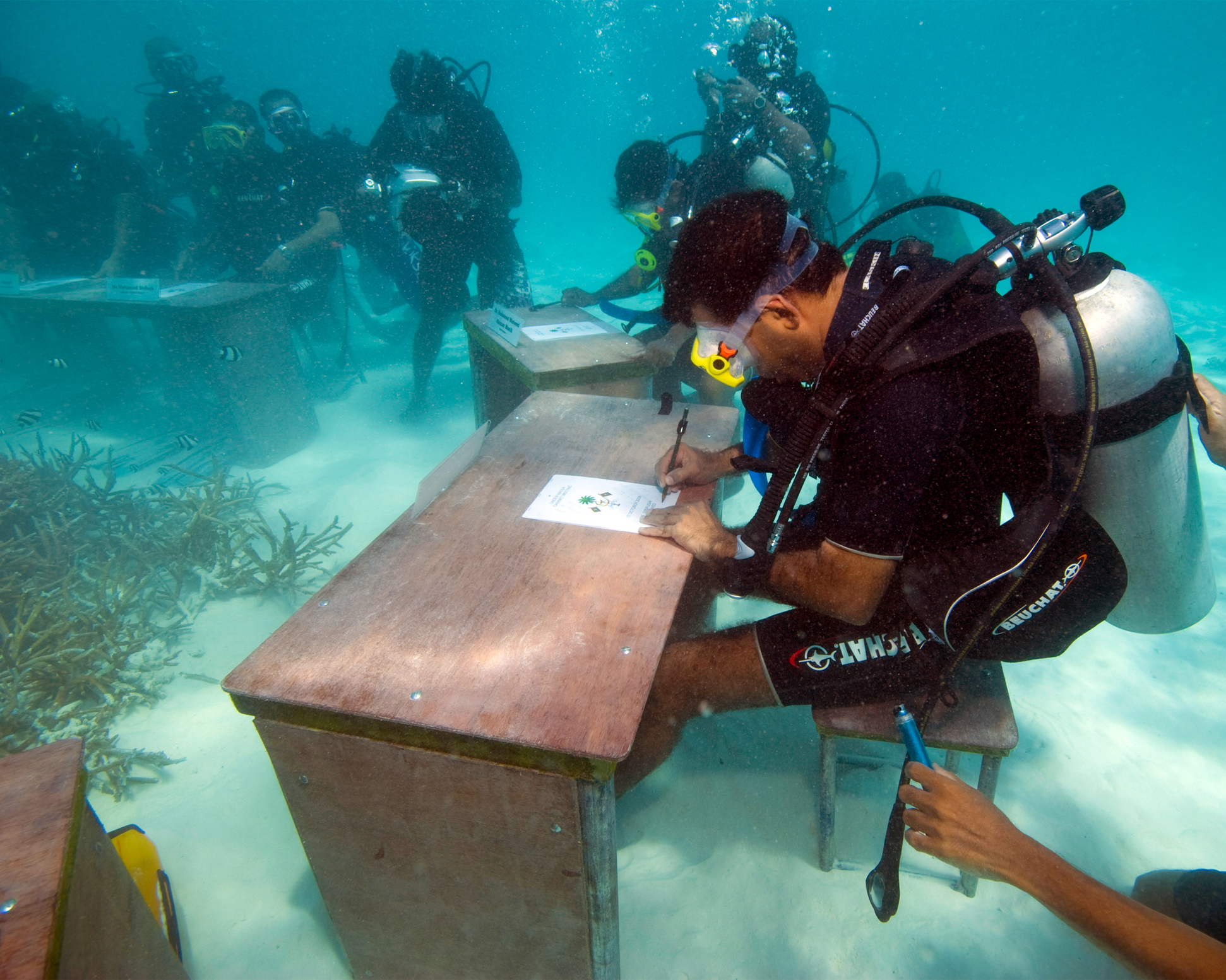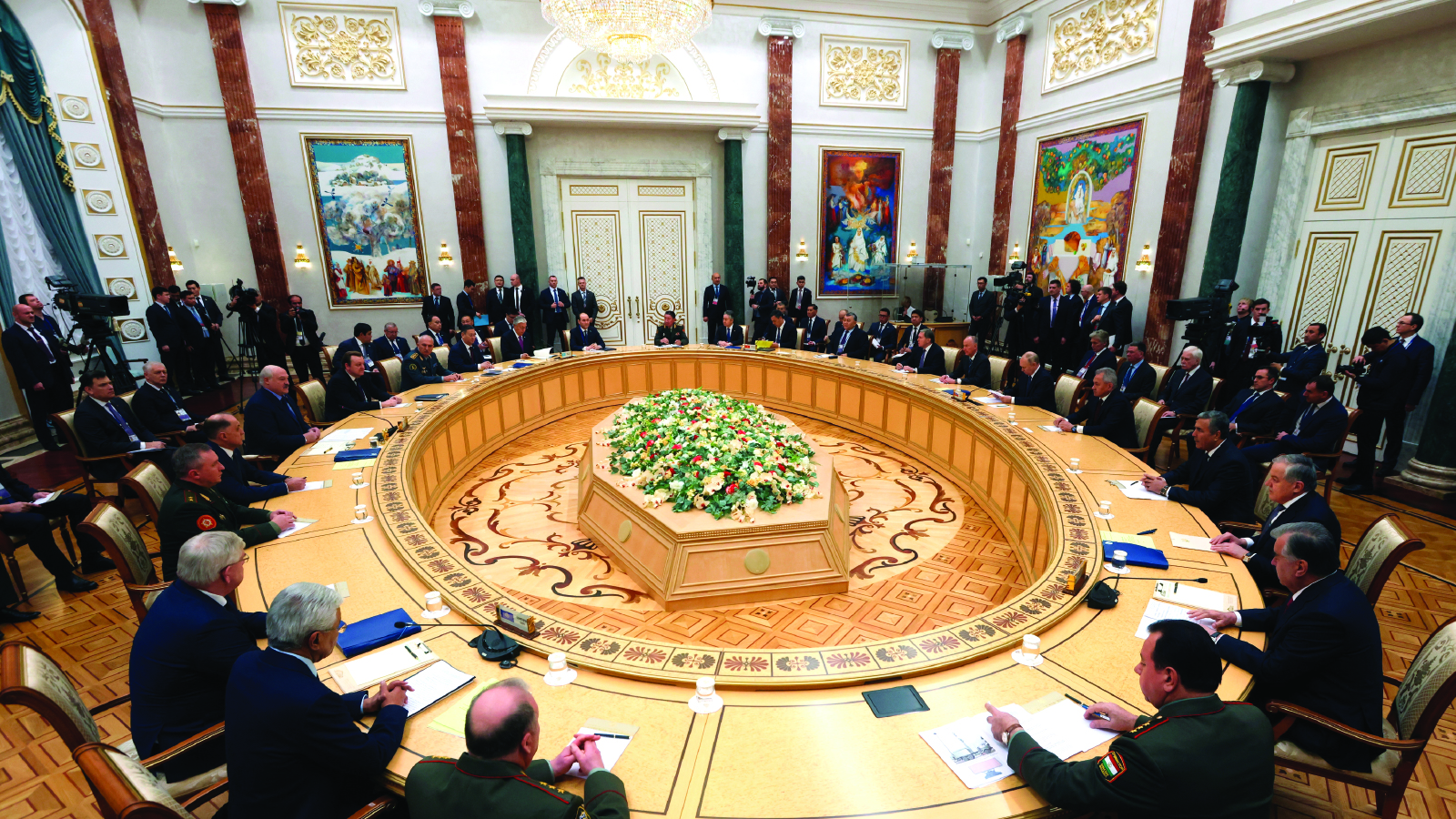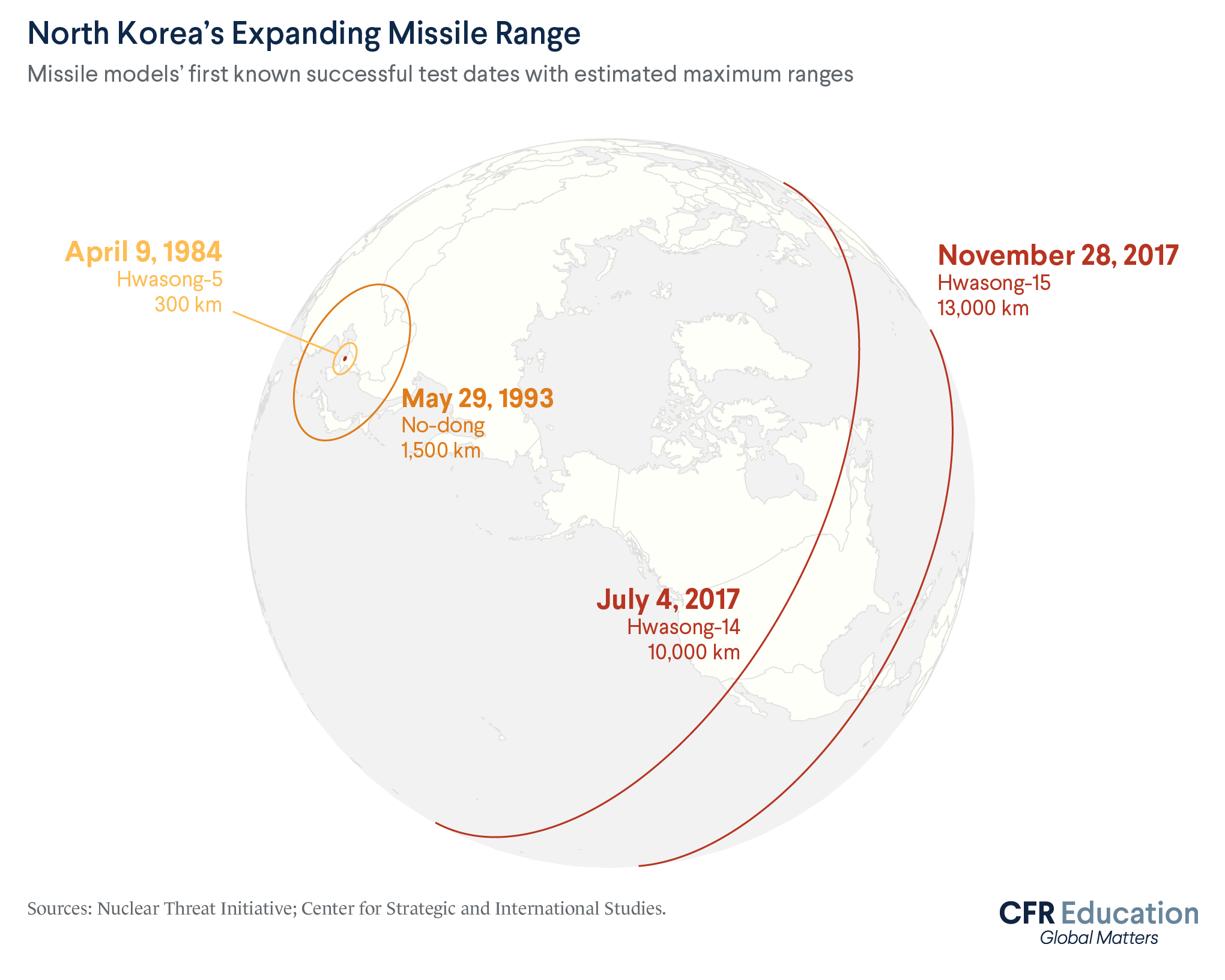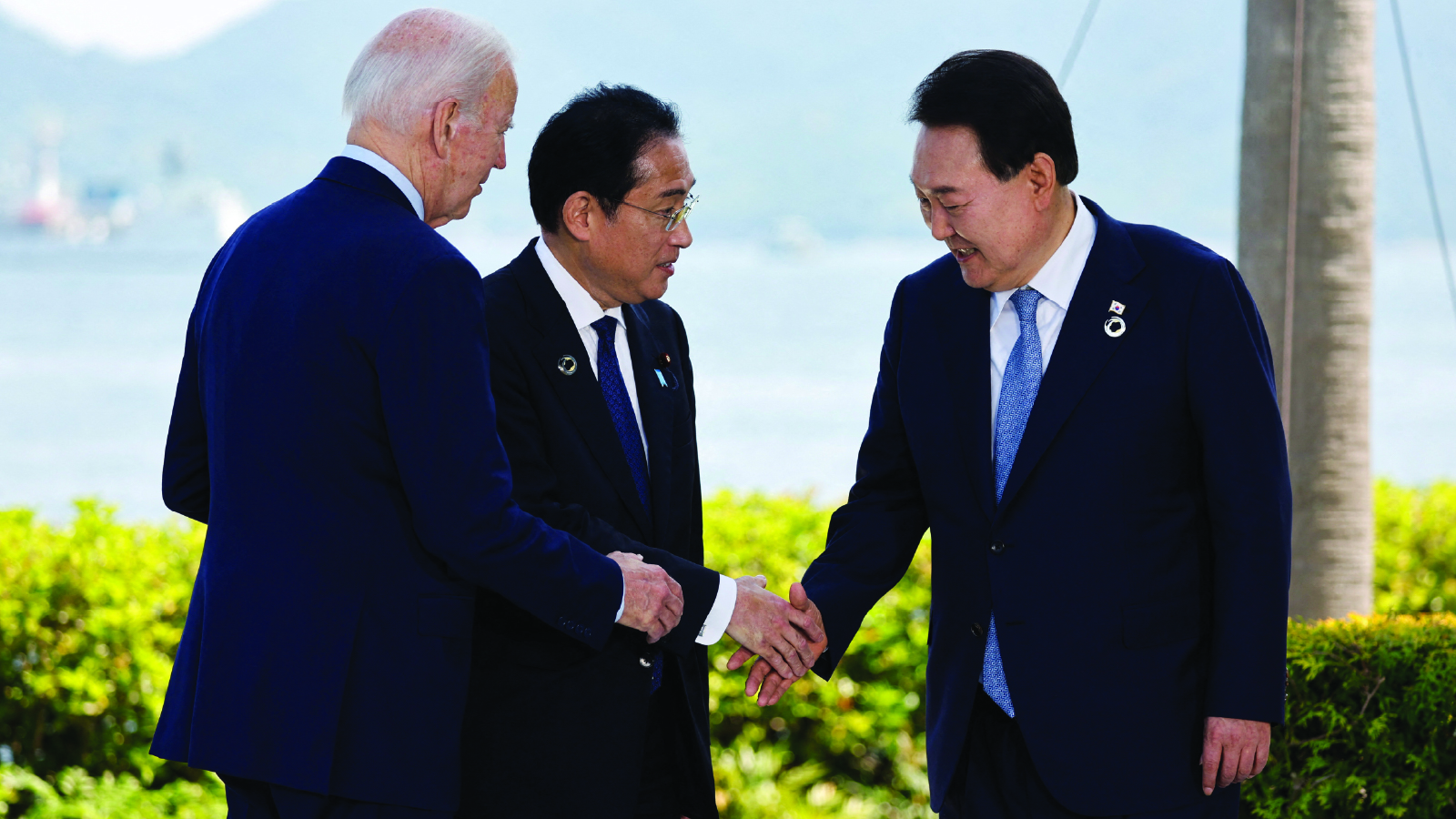Regional Politics: Asia
Territorial disputes, historical animosities, powerful militaries, and nuclear weapons make for high-stakes geopolitics in Asia.
Just look at India and Pakistan. Former U.S. President Bill Clinton once described the India-Pakistan border as “the most dangerous place in the world.” Since their independence, India and Pakistan have fought multiple wars, three of them over the contested territory of Kashmir. Because both countries have nuclear weapons, another conflict could be catastrophic.
For India, Pakistan is just one of two worrisome neighbors. The other is a growing power contending with many other countries for regional influence: China.
As China has grown more powerful economically and militarily, it has looked to assert its dominance in everything from trade to international institutions like the United Nations. It has also been more assertive in putting forward its claims in the South China Sea.
China’s efforts to exert influence in the region have been met with resistance in some cases. In Taiwan, protests broke out in 2024 against a series of proposed reforms that protesters claimed made Taiwan more vulnerable to Chinese influence. In Vietnam, demonstrators have objected to their government’s plans to allow Chinese investors to lease Vietnamese land for ninety-nine years. Meanwhile, the United States also works to thwart Chinese dominance. It maintains a powerful military presence in Asia, which it uses to provide security to its allies such as Australia, Japan, the Philippines, and South Korea.
While the region deals with tense military and economic competition, global issues such as climate change and health security could demand increased cooperation. Some regional organizations have emerged to help coordinate cooperation among Asian countries, but so far, many have yet to prove effective.
What else defines Asia and its geopolitics?
Here are ten conflicts, partnerships, and developments that continue to drive events across the region.
India and Pakistan: A Region-Defining Rivalry
India and Pakistan have been hostile neighbors since their independence from the British in 1947. The partition of the two countries largely followed religious and geographic divisions: Hindu-majority states joined India, while Muslim-majority states opted for Pakistan. However, Kashmir was in a unique position. It had a Muslim-majority population but a Hindu ruler who decided to remain independent. Today, control over the region has become a focal point for competition between India and Pakistan. Pakistan is known to support Islamist militias, which predominantly target Kashmiri Hindus. India, on the other hand, continues to occupy most of the region and pushes for greater integration of Kashmir with the rest of the country. In 2019, India revoked Kashmir’s special status as a semi-autonomous region. To prevent mass protests, the Indian government placed dozens of Kashmiri political leaders under house arrest. Thousands of political activists and journalists were arbitrarily detained, with internet access shut down for months and public gatherings banned. Over the past decade, Pakistan has raised concerns at the United Nations regarding the protection of Indian and Kashmiri Muslims. India and Pakistan have now fought three wars over Kashmir with no resolution in sight. The fact that both countries possess nuclear arsenals considerably raises the stakes of this potential flashpoint for conflict.
China and India: Asia’s Jostling Superpowers
On land, India’s main rival is Pakistan. But at sea, it faces an even stronger competitor: China. India and China’s tense relations have roots in border disputes in the Himalayas, where the two fought a war in 1962. (Fighting broke out again in 2020, further souring relations.) But China has also recently been increasing its presence in the Indian Ocean, which India views as traditionally its area of influence. China has created a chain of projects, including ports in several countries that neighbor India. It has also sent aircraft carriers through the Indian Ocean to protect Chinese interests. China insists its activity in the Indian Ocean is purely commercial. But many Indian observers are skeptical. China’s close economic and military relationship with Pakistan has particularly worried India, which sees the increased Chinese presence from all sides as a threat to India’s power in the region. Meanwhile, India has recently strengthened economic ties with Taiwan, further inflaming tensions with China.
The South China Sea: A Geopolitical Battleground
The South China Sea—a strategic, natural gas-rich waterway through which more than $5 trillion in trade passes every year—has become one of the most disputed areas in the region. Beginning in the 1970s, countries started claiming tiny, uninhabited islands and areas of the sea for fishing rights and access to natural resources. (The sea contains an estimated 11 billion barrels of extractable oil.) China claims sovereignty over 80 percent of the sea. That claim is rejected by its six maritime neighbors: Taiwan, Vietnam, Brunei, Malaysia, Indonesia, and the Philippines. China has built new islands with military installations and ports. In response, the United States has sent ships to the area to uphold freedom of navigation, asserting that the international waters do not belong to any one country. But China continues to act on its claims, increasing regional tensions. In 2024, the Chinese coast guard and navy attacked Philippine ships with water cannons; China has also rammed Philippine fishing vessels and even physically assaulted Vietnamese fishermen. Policymakers fear that the United States could be drawn into a conflict if hostilities against its allies continue to escalate.
ASEAN: Southeast Asia Grapples With China
The Association of Southeast Asian Nations (ASEAN) includes ten member countries: Brunei, Cambodia, Indonesia, Laos, Malaysia, Myanmar, the Philippines, Singapore, Thailand, and Vietnam. Founded to promote peace in the region, ASEAN has so far achieved its goal of preventing war among its members. But these countries disagree on how to approach China—the region’s largest trading partner and military force. Some members like Cambodia have recently grown closer to China, courting Chinese investment and military equipment. But other countries, such as Vietnam, are less eager to warm up to China. They fear China’s growing influence in the region and are worried that China could end up controlling major trading routes in the South China Sea. Some countries, including the Philippines, have appealed to the United States for help protecting freedom of navigation in regional waters. ASEAN requires that all members agree via unanimous vote before it can take action on any issue, so until internal disagreements can be resolved, ASEAN needs to rely on other means to resolve disputes among its members.
Rising Seas Threaten Asia’s Island Countries
Climate change and extreme weather conditions pose grave threats to a region known for its dense cities and populous coastlines. Cyclones, heat waves, and other disasters like floods and droughts claim thousands of lives across Asia each year—and recovery costs strain the region’s economies. Rising sea levels, however, are the biggest threat; some small island countries are at risk of being entirely submerged. The Maldives, the world’s lowest-lying country, is projected to be underwater by 2100. To prevent this, the government is building artificial islands and reefs, but these innovative efforts don’t address immediate problems like food and freshwater shortages. The Maldives are not the only country at risk. One-third of Jakarta, Indonesia’s capital and a city of eleven million people, is expected to be submerged by 2050. The government is implementing plans to relocate its capital away from Jakarta, but the $35 billion project will take decades to complete. If current trends continue, some of Asia’s low-lying island countries could become uninhabitable in less than a century—displacing millions of people and causing political stress across the region.
SAARC and CSTO: The Failure of Regional Institutions
South and Central Asia have sought to form effective regional organizations like ASEAN or the European Union to promote peace and cooperation. However, these organizations have, to date, struggled to operate effectively. In South Asia, rivalry between India and Pakistan hinders regional cooperation. One organization, the South Asian Association for Regional Cooperation (SAARC), was established in 1985 to promote economic growth and democracy across South Asia. But the organization has been characterized as a failure. South Asia remains one of the least economically integrated regions in the world—with almost no intra-regional trade. SAARC has rarely convened, and some analysts consider it dead. Meanwhile, in Central Asia another regional group, while not dead, could be considered a zombie. In 1992, shortly after the fall of the Soviet Union, Russia gathered former Soviet republics, including Armenia, Belarus, Kazakhstan, Kyrgyzstan, and Tajikistan to form a military alliance now called the Collective Security Treaty Organization (CSTO), which was built on the promise of mutual security, or the obligation to come to another member country’s defense. Since Russia invaded Ukraine in 2022, however, CSTO has withered. Several CSTO countries have rejected Russia's annexation of Ukrainian provinces. Russia itself has also reneged on CSTO responsibilities, ignoring clashes between Kyrgyzstan and Tajikistan, as well as between Armenia and Azerbaijan.
North Korea and South Korea: East Asia’s Powder Keg
Despite being a small, impoverished country, North Korea has become a threat to regional and global security. That threat is due to North Korea’s nuclear program and its dictatorship, which has frequently threatened confrontation with South Korea and the United States. Nuclear weapons are crucial to protecting the ruling Kim family from foreign intervention and improving North Korea’s bargaining position in future negotiations over reuniting the Korean Peninsula. Various countries, including the United States, China, and Japan, have tried to negotiate with North Korea to limit its nuclear program, but these talks have repeatedly failed. In recent years, North Korea’s nuclear threats have led South Korea to openly consider its own military options. Experts worry that a miscalculation or a quick rise in tensions—with South Korea and Japan potentially seeking nuclear weapons of their own—could lead to a nuclear arms race in the region or trigger North Korea’s use of these deadly weapons, which could be capable of striking much of the U.S. mainland.
China and Taiwan: Independent Country or Chinese Province
On the face of it, Taiwan looks like an independent country. It has its own government, army, and currency. But Beijing argues that Taiwan is a Chinese province and has threatened to use force against Taiwan if it formally declares independence. In recent years, that confrontation has become a worrisome possibility. One indicator of growing tensions is China’s military drills in the surrounding area, which can alternately be seen as efforts at intimidation, or as preparations for invasion. Since 2020, the frequency, complexity, and technological sophistication of Chinese drills have all increased. During one drill in late 2024, a record number of Chinese military aircraft (153) flew near Taiwan. China’s military is much larger than Taiwan’s; even if China doesn’t attack the island directly, it could still initiate a naval blockade. Faced with these odds, Taiwan has sought strong ties with the United States to ensure its security. But even that does not guarantee Taiwan’s protection. The United States has historically maintained a policy of ambiguity on whether it would defend Taiwan should China attack it.
China and Russia: The Shanghai Cooperation Organization
The Shanghai Cooperation Organization (SCO) comprises ten countries, as well as twenty nonmember observer and partner states. China, Russia, Kazakhstan, Kyrgyzstan, Tajikistan, and Uzbekistan formed the original organization in 2001. Since then, India, Iran, Pakistan, and Belarus have also become full members. The SCO was originally formed in 1996 to build trust among members and reduce military tensions in border regions. Since then, its goals have expanded to include combating terrorism and expanding military and economic partnerships among members. The SCO prioritizes non-interference in members’ domestic affairs, meaning that members, many of whom have autocratic governments, can develop economic and military ties without facing pressure over corruption or human rights abuses. This has led some experts to characterize the SCO as a nondemocratic competitor to Western-led organizations such as the North Atlantic Treaty Organization, which view upholding democratic principles and human rights as a component of membership. To date, the SCO’s ability to coordinate regional cooperation has proven limited. This is in part due to its nebulous membership, which contains many countries with competing interests or rivalries. But some analysts also believe that Russia and China value the organization more as a counterbalance to what they see as a Western-led world order than a forum for cooperation on specific goals.
Trilateral Security in the Pacific
In Northeast Asia, no political organization like ASEAN exists. That’s because of the geopolitical and historical tensions between neighbors. But regional threats—including China’s military aggression and North Korea’s unpredictability—have united several countries. Japan, the Philippines, and South Korea have all moved closer to one another in recent years. Not only do these Pacific countries agree on common regional threats, but they also share a powerful ally. The United States has maintained relations with each country for decades. Recently, Washington has turned its bilateral relationships into trilateral partnerships. In 2024, the United States constructed two trilateral frameworks for security and economic cooperation: one with Japan and South Korea, and one with Japan and the Philippines. China has criticized these partnerships, calling them “dangerous” and claiming they represent attempts to stoke confrontation.
